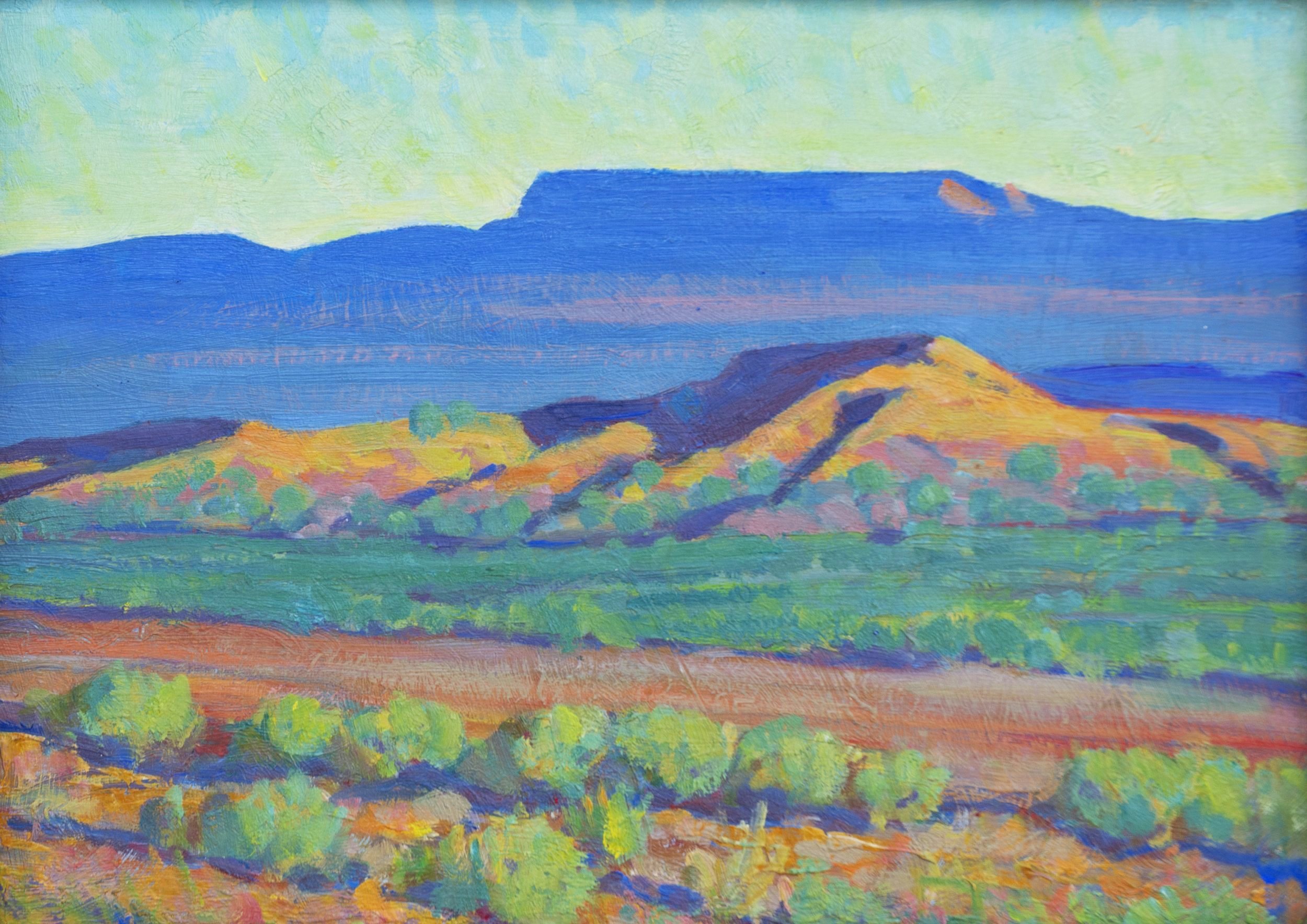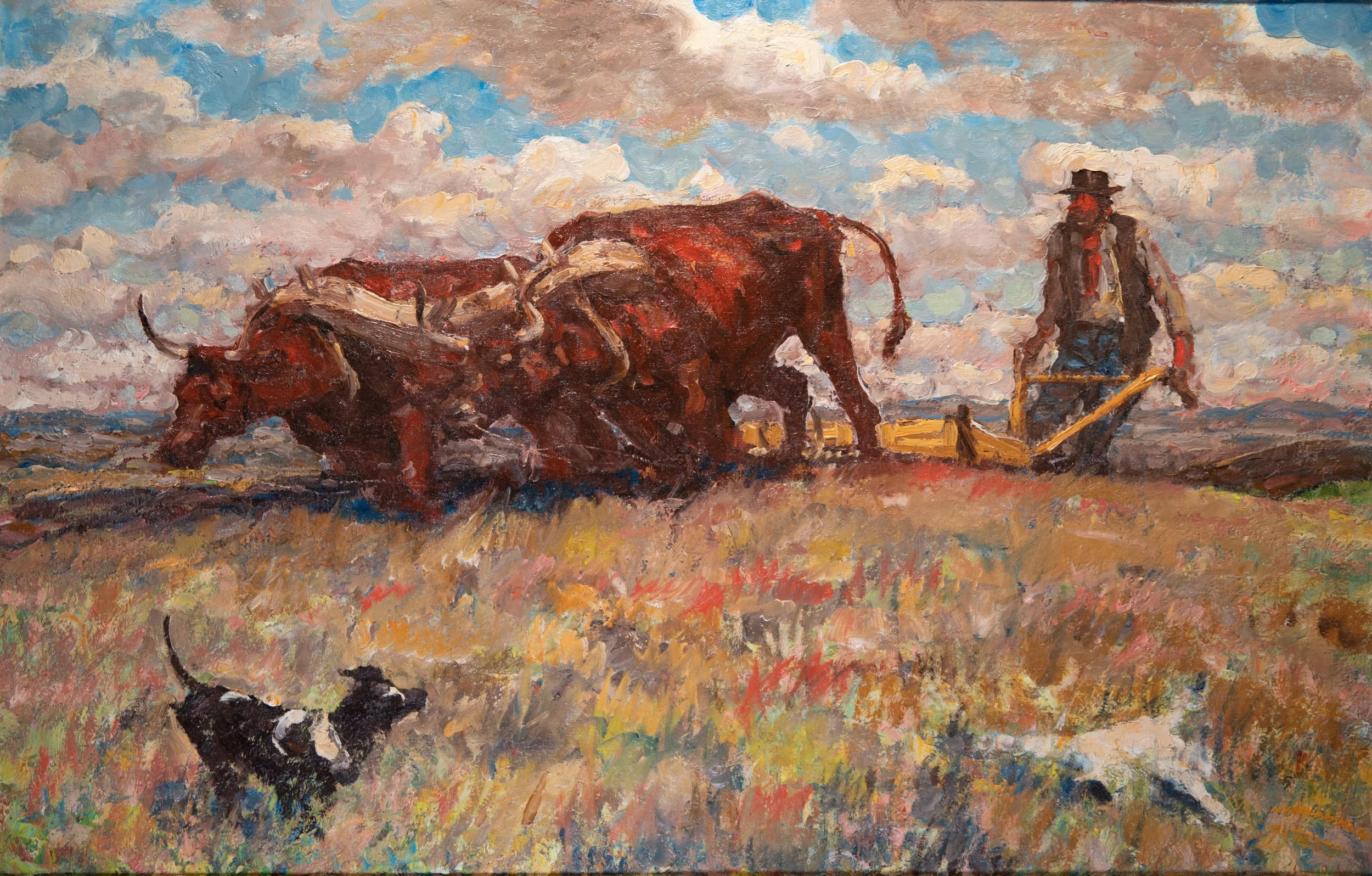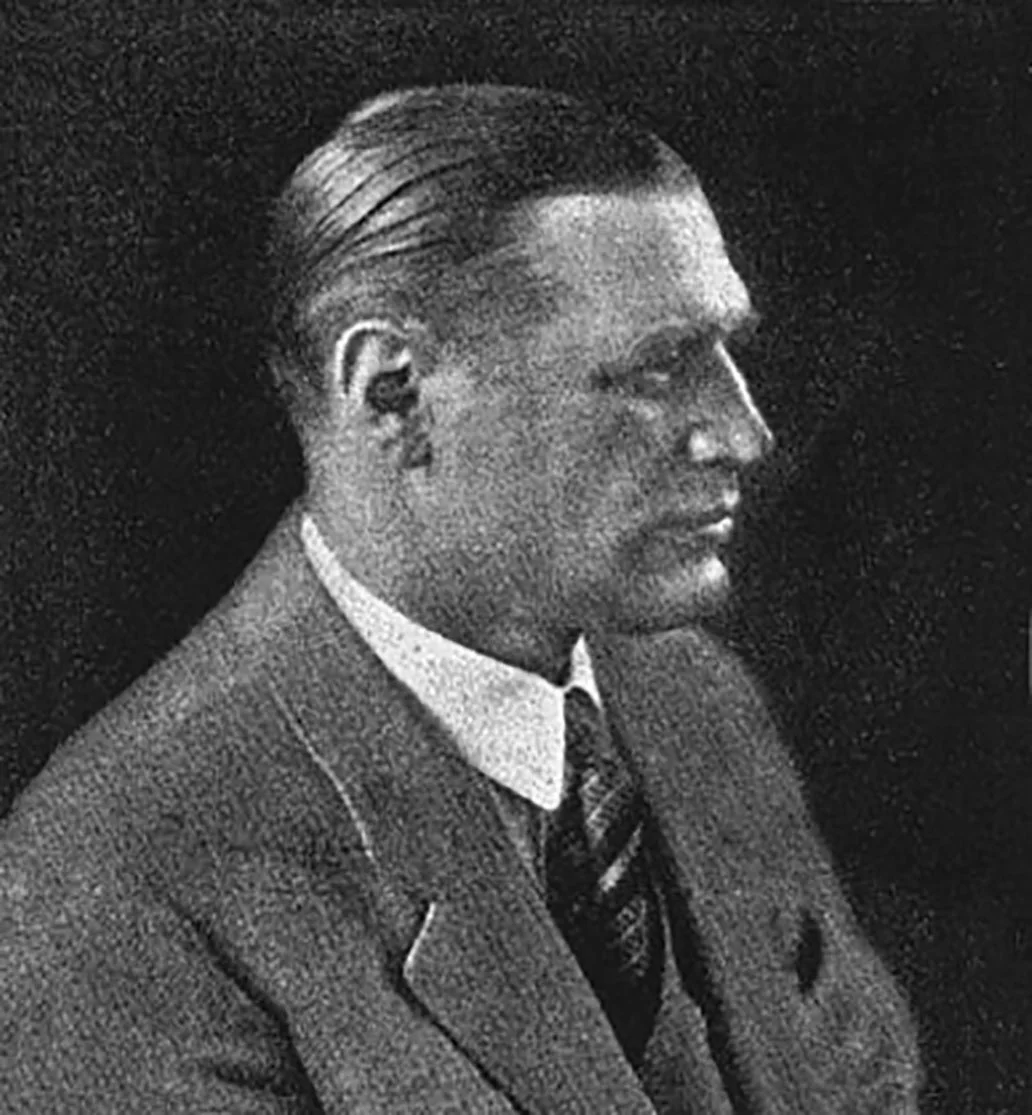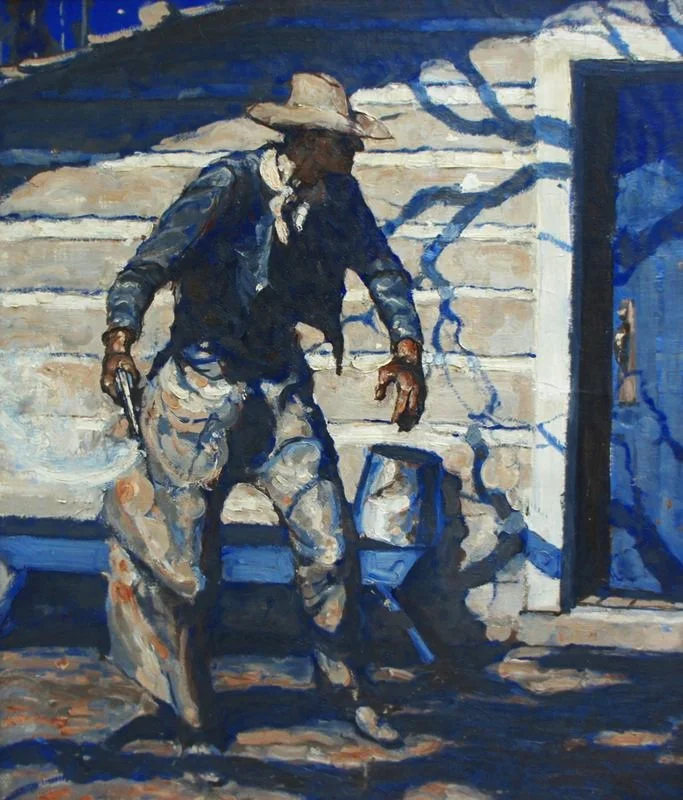
Harvey Thomas Dunn
1884-1952
Harvey Dunn was born on a homestead farm near Manchester, South Dakota. His talent was first recognized by Ada Caldwell, an art instructor at South Dakota Agricultural College (now South Dakota State University), which Dunn attended from 1901 to 1902. Encouraged by Caldwell, Dunn pursued his artistic studies in Wilmington, Delaware, under the instruction of Howard Pyle. Dunn was part of a small group of Pyle's influential students who would later revolutionize the world of illustration and are collectively known as the Brandywine School.
In 1906, after two years with Pyle, Dunn established his own studio in Wilmington and immediately embarked on a successful career in illustration. He was a prolific painter, once completing fifty-five paintings in eleven weeks for various clients. A contemporary described his style as follows: "He approached the canvas with fervor, almost impaling it with his brush." In addition to illustrating books, Dunn's work began to regularly appear in magazines such as Collier's Weekly, Harper's Magazine, The Saturday Evening Post, and Scribner's.
A painter, teacher, and wartime artist-correspondent with a profound boldness in composition.
Teaching Career and Later Years
In 1914, Dunn moved east and settled in Leonia, New Jersey, just across the Hudson River from Manhattan and its publishing industry. Inspired by Pyle's example, Dunn opened the Leonia School of Illustration in 1915, alongside artist Charles S. Chapman. The South Dakota Art Museum in Brookings, South Dakota, houses approximately 110 of Dunn's finest works.
Later in life, Dunn expressed, "The most fulfilling and meaningful thing I have ever done is to teach." Dunn became a respected and influential teacher, affectionately referred to as "Mr. Dunn" by his students as a sign of respect and admiration. The majority of his students were either graduate-level painters or professional illustrators. Dunn was not interested in teaching painting techniques alone; his approach was philosophical. He engaged in extensive discussions about spirit, emotions, and discourse. He shared his philosophy of life and art, provided group criticism, and moved from easel to easel, discussing each student's work in turn.
Dunn's most remarkable teaching achievements were likely attained at the Grand Central School of Art, established by the Grand Central Art Galleries and situated on the top floor of Grand Central Terminal in New York City. A student captured his comments during a five-hour class session, which were subsequently published in 1934 as a slim volume titled "An Evening in the Classroom." Dunn was a demanding teacher and sometimes a harsh critic, aiming to prepare his students for the realities and intense competition of the commercial world. He believed that talent alone was insufficient. As he once stated, "If you ever achieve anything of value, it will be because you remain true to the deep desire or ideal that led you to seek artistic expression in pictures." One of his students was the cowboy and western painter Arthur Roy Mitchell, who frequently invited Dunn to paint in his hometown of Trinidad, Colorado.
In 1945, Dunn was named a member of the National Academy of Design. He passed away in New York at the age of 68, remaining one of A.R. Mitchell's closest friends throughout his entire life.
A collection of his paintings can be found alongside his contemporaries and friends, A.R. Mitchell and Harold Von Schmidt.





